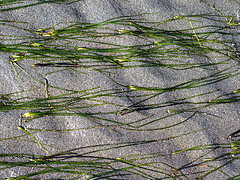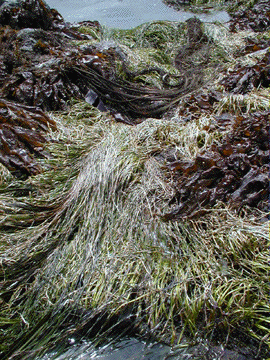
Seaweeds and Seagrasses
Seagrasses
World wide there are 7000 estimated seaweeds, 4000 microalgae and 50 seagrasses. Here in the Pacific Northwest we have an estimated 700 of these species making our area one of the richest in seaweed biodiversity in the world. (Harbo, 1999)
Sites visited:
Fox Island - South Puget Sound
Trip aboard the Centennial - San Juan Island
Argyle Lagoon - San Juan Island
Cattle Point - San Juan Island
Zostera:Zostera - Greek for “aquatic plant” - has two species, one native to our Washington waters and one which is not.
Zostera Marina (our native eel grass) has dull green leaves which are 4mm or more wide and can grow up to 3m long. Zostera marina, is a fragile intertidal plant that provides a rich habitat for many invertebrate species and juvenile fish, including their eggs. This species is the common sea grass in our soft substrate, intertidal zones.
Zostera japonica is not as common in our intertidal flats but has been spreading since it was accidentally introduced by Japanese ships. It generally is no more then 3mm wide and about .5m long.
Phyllospadix:
Phyllospadix - Surfgrass
|
 |


